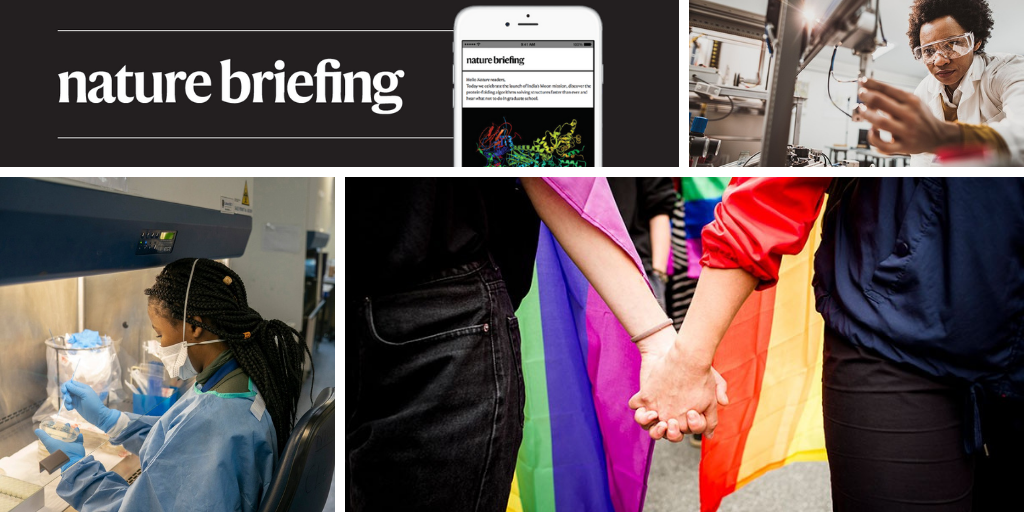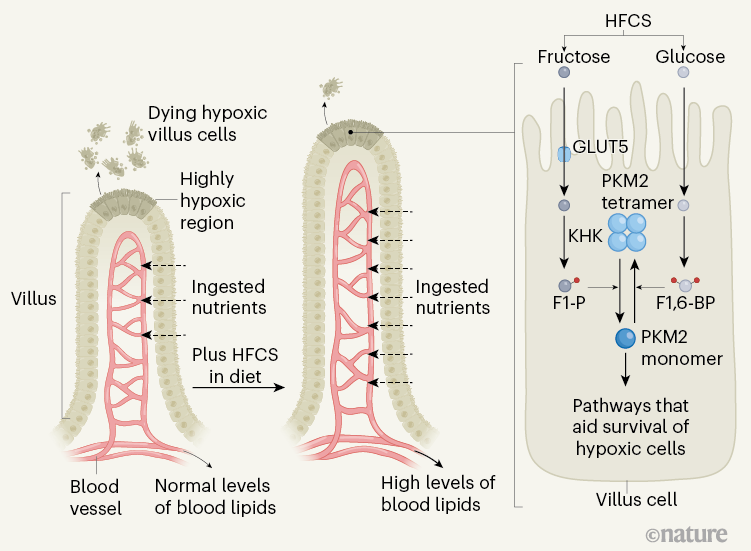Hello Nature readers, would you like to get this Briefing in your inbox free every day? Sign up here.
The genetic patterns associated with homosexual behaviour might help people who have only heterosexual sex to find more partners. Researchers looked at data collected from hundreds of thousands of people, mostly in the United States and United Kingdom, and found that people who’d had at least one same-sex partner tended to share patterns of small genetic differences scattered throughout the genome. Among people who’d had only heterosexual sex, those with numerous partners tended to share some of those same genetic markers. The findings might help solve the evolutionary mystery of how same-sex attraction — which seems to be at least partly genetic — remains widespread despite possibly reducing a person’s number of offspring. But there are plenty of caveats. For instance, participants didn’t define their sexual orientation, just their sexual behaviour — some of which they might have chosen to keep private.
Read more: Lead author Brendan Zietsch describes the research in The Conversation (4 min read)
Reference: Nature Human Behavior paper & Science paper
The United States has given full regulatory approval to the Pfizer–BioNTech vaccine for people aged 16 and over — making it the first COVID-19 vaccine to progress from emergency use authorization in the country. Now, more organizations and employers might insist that people get vaccinated. And scientists hope that the approval could reduce vaccine hesitancy. “A full approval takes away that ‘Oh, it’s experimental’ kind of language,” says public-health researcher Sandra Quinn.
The Washington post | 11 min read
Saturn’s core might be a slushy mixture of ice and rock, rather than a compact solid made of mostly one or the other material, as is generally thought. The diffuse core extends to approximately 60% of the planet’s radius — much bigger than the 10–20% of a planet’s radius that would be occupied by the expected core. Researchers gleaned the surprising discovery by analysing gravitational perturbations in the planet’s rings caused by the oscillating core. “Saturn essentially rings like a bell at all times,” says planetary scientist Christopher Mankovich.
MIT Technology review | 5 min read (porous paywall)
Reference: Nature Astronomy paper
Only 16% of biomedical patents in 2010 were filed by teams consisting mostly of women. An analysis of 400,000 biomedical patents filed between 1976 and 2010 in the United States found that all-female teams were 35% more likely than all-male teams to invent technologies related to women’s health. If women and men had produced an equal number of patents since 1976, researchers estimate that there would be 6,500 more female-focused inventions today. “We’d be better off with inventions that represent all of the knowledge and all the human capacity we have,” says sociologist Laurel Smith-Doerr.
Features & opinion
Spotting drug-resistant pathogens and identifying effective treatments is difficult. Labs equipped to handle especially infectious pathogens, such as Mycobacterium tuberculosis, can be hard to come by in some places, and instruments that test for drug sensitivity can take days to return results. In many cases, physicians look for resistance only after one or more standard antibiotics fail. Researchers are turning to tools such as atomic force microscopy, genomics and machine learning to create point-of-care diagnostic tests that they hope will provide results in minutes, minimizing the use of incorrect or unnecessary prescriptions.
Physicist Netta Engelhardt is at the forefront of a network of quantum-gravity theorists who are chipping away at the long-standing black-hole information paradox that has bedevilled the field for decades. Current theories say that the information carried by anything that had previously fallen into a black hole would be lost to the Universe. This clashes with laws of physics that say that information, like energy, is conserved. “Our understanding of the Universe is going to be incomplete until we have a description of what happens inside a black hole,” says Engelhardt. “The information problem is such a difficult problem to solve that any progress… is making progress.”
Infographic of the week
Feeding mice high-fructose corn syrup (HFCS) — a sweetener that is widely used in human foods — seems to promote obesity by boosting the ability of the intestine to absorb nutrients. Nutrients in the gut enter the bloodstream after passing through cells in intestinal protrusions called villi. Mice that received HFCS in their diet had longer villi — and so more surface area for nutrient uptake — and higher levels of fatty molecules called lipids in their blood than did control animals. (Nature News & Views | 6 min read)
See more of the week’s key infographics, selected by Nature’s news and art teams.







More News
Author Correction: Bitter taste receptor activation by cholesterol and an intracellular tastant – Nature
Audio long read: How does ChatGPT ‘think’? Psychology and neuroscience crack open AI large language models
Ozempic keeps wowing: trial data show benefits for kidney disease